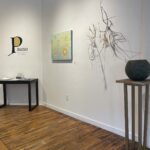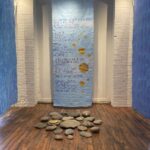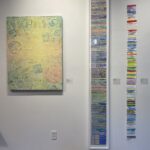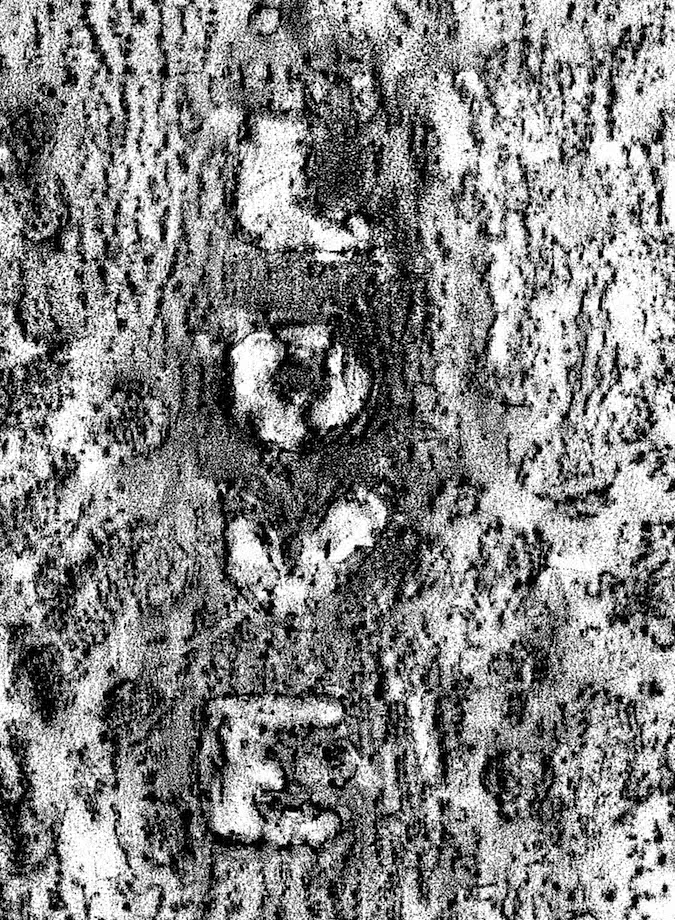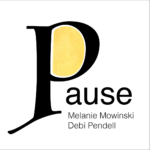
Pause: Exhibition Reception September 9, 2023
August 28, 2023
Reflecting Ecologies Opens Friday, October 6th at MCLA’s Gallery 51
October 2, 2023If you were able to make it to Pause at the Eclipse Mill during its short run in September, my collaborator Debi Pendell and I say thank you! Here are some of the images, and below is my statement about the work, should you like to learn more.
What does it mean to pause? A pause is not a full stop. It can be momentary, like the pause you take within a heated argument or when lost to orient and begin again. It can also be a break in routine. For artists that can look like an artist residency, or a scheduled time in one’s studio. For an academic and other privileged folks, it can take the form of a year-long sabbatical. None of these are full stops or endings. In today’s busy busy busy world, to pause often means to step out of that busy-ness with the intention of finding calm and ease before returning to the swirl of everyday living. Pause is about all these kinds of momentary interludes.
I came to this project through my fascination with Books of Hours. Books of Hours were/are Christian Devotional prayer books used to pray the canonical or Daily Hours. These books were popular during the Middle Ages and contained elaborate lettering and illustrations to help guide the prayers of the (literate and wealthy) faithful. These collections of calendars, psalms, prayers, and other texts became known as illuminated manuscripts, ranging in minimalistic lettering to full-page, gold-leafed, and highly detailed miniature paintings depending on the budget of the commissioned book.
What captivated me beyond the fine craft of these books was the sentiment behind them, the intention to stop seven times and pray. Parallel to this, was my interest in the Muslim call to prayer, a similar practice where one would pause five times in a day to kneel and bow towards Mecca in prayer. Both practices center in a moment of pause. I asked:
- Does stopping to pray that many times in a day make it a discipline?
- Does the adherence to the practice represent how strong one’s fire for God is?
- Could that passion for prayer be enough to motivate someone to pray 5-7 times a day?
- Does the practice have to be centered in prayer?
- How might this be adapted to 21st century living?
~·~
Debi and I began our conversation back and forth through grids and words, lines, and textures. Debi was not raised with a strict religious tradition, whereas I was raised in a devoted Catholic household and I hold a master’s in religion. Her first response was naming what was happening thanks to these prayers—the pause. Time to pause, reflect, center, and then return to one’s day.
The heart of my inquiry centered on this question: if I was disciplined enough to “pause” would my day-to-day living be more easeful? And then I asked myself:
- How do I think about PAUSE beyond that element of ease and peace that I’m searching for?
- How do I remember that PAUSE is not about stopping, it’s about taking a moment or a break and then to return to something refreshed or focused in a different way.
- How does the pause allow us to assess a situation? The first step in a cardiac arrest is to stop and take your own pulse. How does that centering help to move one forward?
- How does the pause help prevent someone from saying something they might regret in the middle of an argument?
- How does the pause help you figure out your envy, jealousy, needs, and then direct you to perhaps change the direction of something?
I already had a morning meditation, writing, art-making practice. What would it be like to add additional pauses in my day? I experimented with adding other moments of making/meditation at times when I often pause during my day, for example at 11 am when I eat a banana, or when I get home from work when I often want a snack. Neither one stuck.
My morning practice, however, is solid. Two of the works in this exhibit come from that dailyness that begins my day.
~·~
This past winter, I traveled to Tetouan, Morocco for an artist residency. I walked the old medina noticing highly patterned mosaic fountains and the architectural conversation between the Christians and Moors. Then, I walked the Camino Frances in Spain. 550+ miles from Saint Jean Pied du Port in France over the Pyrenees to Santiago de Compostela and then onto to Finisterre, on the west coast of Spain—where I observed the continued role and importance of water and discovered La Convivencia, how Muslims, Christians, and Jews co-existed together in Spain for hundreds of years, expanding the architectural conversation observed in Northern Africa.
While in Morocco and Spain, my attention settled onto three things:
- The discipline of prayer centered in religion or secular mindfulness.
- The necessity of water: the practical nature of fountains, the number of towns/cities built on or around rivers or bodies of water, and importance of water to survival.
- Convivencia: largely an academic term that describes a period of harmony between Christians, Muslims, and Jews that existed for nearly seven centuries throughout Andalucía, and likely into Northern Africa observed in architecture and sacred geometry.
Upon my return, I looked for ways to connect my interest in the Daily Office/Muslim Call to Prayer and their visual counterparts with the necessity of water and Convivencia. Along the way, a line of text about the calm of the ocean under the turbulence of the waves came across my path. This text inspired me to write the poem “If I could walk on the bottom of the river”. Debi and I discussed how a river is like a pause. A river has moments of calm, and moments of violence. Moments of peace, and moments of rage. River imagery in language and form entered my lexicon of making and inspired the artist book, “I am.”
I also introduced the red thread. The red thread can suggest several things—from the thread that Adriadne gave Theseus to follow his way out of the labyrinth where the Minotaur lived, to a particular line of thinking that connects one idea to another. An ancient Japanese legend says that we each are born with a red thread around our pinky finger that is tied to someone else’s in the universe whom we are destined to meet. The red thread has also been linked to remembering the good and the practice of returning to what our heart knows and putting that knowing into action. Red represents all of this whenever you see it in my work.
The careful observer will notice elements related to the heart. Pulse line? Pathways? Rivers? You decide. Who among us hasn’t nearly lost someone close to them. And then who among us hasn’t nearly lost their own life. These heart related elements tip-toe up to those losses. The pause then becomes an opportunity to re:member the who, what, and why that motivates living.
This project was made possible thanks in part to grant from the Cultural Council of Northern Berkshire, a division of the Massachusetts Cultural Council.


